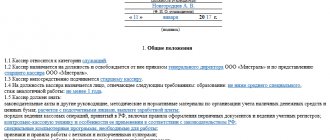Lending has long become popular in Russia, so it is difficult to imagine a person who has never borrowed money from financial institutions or individuals.
Dear readers! The article talks about typical ways to resolve legal issues, but each case is individual. If you want to find out how to solve your particular problem , contact a consultant:
+7 (499) 110-43-85 (Moscow)
+7 (812) 317-60-09 (Saint Petersburg)
8 (800) 222-69-48 (Regions)
APPLICATIONS AND CALLS ARE ACCEPTED 24/7 and 7 days a week.
It's fast and FREE !
To take a loan from an individual in 2020, you need to draw up a loan agreement in accordance with the Civil Code of Russia.
Very often there are situations when a person urgently needs funds to conduct business and economic activities.
If a citizen does not have support from sponsors, then he has to contact the bank. Banking institutions are not always a good option.
Therefore, for most, the solution is to take out a small loan from an individual in 2020. This is a fairly popular service in the financing market, which is gaining great popularity every day.
It is only important to know the rules for drawing up an agreement and study all the nuances of this procedure.
What is special about a loan between an individual entrepreneur and an individual?
In some cases, individual entrepreneurs can provide loans to individuals. Moreover, this loan can be either in cash or in the form of transferring any property to an individual (equipment, vehicles, etc.). In these cases, it becomes necessary to obtain an interest-bearing or interest-free loan. The type of loan is chosen by the borrower and the lender independently, but taking into account regulatory requirements.
Important! If the agreement does not indicate that the loan is interest-free, then in this case it will be considered interest-bearing with monthly calculation and payment of interest established by the Central Bank of the Russian Federation.
If the loan amount does not exceed 1000 rubles, it is possible to reach an agreement orally without confirming it with a written loan agreement.
Can an individual entrepreneur give a loan to an individual entrepreneur?
An individual can borrow not only from credit institutions, but also from private companies. A similar procedure is also allowed for individual entrepreneurs. There can be many reasons for these actions: personal needs or business development. If you immediately want to make a profit from the loan, then such transactions will be taxed at the rate of 6%.
Contents of the loan agreement
For your information! In legislative acts, loans between private companies are considered interest-bearing by default. Therefore, the contract must specify the type of agreement.
Interest-free loan agreement
Interest-free loan between individual entrepreneurs and individuals
When providing a loan without paying interest to an individual, the lender assumes the role of a tax agent for personal income tax. According to Art. 226 of the Tax Code of the Russian Federation, an individual entrepreneur who has provided an interest-free loan to an individual is obliged to withhold and pay personal income tax on the income received by the individual as an interest-free loan.
The role of the tax agent obliges the lender:
- calculate material benefits every month;
- withhold personal income tax from this calculation;
- pay the calculated personal income tax to the budget;
- provide reporting documentation on personal income tax.
In accordance with paragraph 7, paragraph 1, art. 223 of the Tax Code of the Russian Federation, the date of actual receipt of income is the last day of each month during the period for which borrowed (credit) funds were provided, when income is received in the form of material benefits obtained from savings on interest when receiving borrowed (credit) funds .
Example No. 1. Determining the period for calculating material benefits.
Individual Entrepreneur Ivanov provided an interest-free cash loan to an individual on July 28, 2020 for a period of 6 months, i.e. until January 29, 2020. According to Art. 223 of the Tax Code of the Russian Federation, material benefits will be calculated:
- 07.2020;
- 08.2020;
- 09.2020;
- 10.2020;
- 11.2020;
- 12.2020;
- 01.2020
| ★ Best-selling book “Accounting from scratch” for dummies (understand how to do accounting in 72 hours) > 8,000 books purchased |
https://youtu.be/0VFBcS0R780
Required documents
The law does not establish a list of documents required for entrepreneurs to enter into an interest-free loan agreement. However, our main goal is to protect ourselves, and it does not matter who we are in this situation - a borrower or a lender.
First of all, the parties should exchange copies (notarized!) of certificates of state registration as an individual entrepreneur.
The borrower should write a receipt confirming receipt of funds (indicating the exact amount). Of course, this is not necessary for the loan agreement to be considered concluded, but if suddenly problems arise later that will have to be resolved in court, a receipt will be very useful.
What tariffs the Land Credit Loan company offers are discussed in the article:
Lend Credit loan
.
MFOs that issue microloans on the Corn card online, see the table.
Interest-bearing loan between individual entrepreneurs and individuals
When providing a loan to an individual with payment of interest less than 2/3 of the current rate of the Central Bank of the Russian Federation at the moment, there is a need to calculate and pay personal income tax on the material benefit, which in this case is the tax base. The occurrence of material benefit in this case is discussed in paragraphs. 1 clause 2 of article 212 of the Tax Code of the Russian Federation.
The lender assumes the role of a tax agent for personal income tax, obligated to monthly calculate and pay personal income tax on income received by an individual.
Taxation
Taxation becomes the cornerstone in the issue of interest-free loans. The reason for this is insufficient legislative regulation of this issue.
Therefore, we have to rely mainly on established judicial practice and official interpretations of the law.
However, unfortunately (or fortunately) there are no legal or documentary arguments for this position, despite the fact that they refer to paragraph 8 of Art. 250 Tax Code of the Russian Federation. However, the question of economic benefit remains open.
This is quite logical, the amount received will be returned to the lender over time, which means there is no profit or income, despite the fact that tax officials refer to the valuation of economic benefits, which is calculated at the refinancing rate of the Central Bank of the Russian Federation, which is quite controversial. Therefore, this amount is not a taxable base (clause 10 of Article 251 of the Tax Code of the Russian Federation).
Calculation of the material benefits of an interest-free loan between an individual entrepreneur and an individual
In accordance with Art. 212 of the Tax Code of the Russian Federation, material benefits received from savings on interest for the use of borrowed (credit) funds are recognized as income of the taxpayer and are subject to personal income tax calculation.
Material benefit can be calculated using the following formula:
MV = SZ * 2/3 KSCB * KKD / 365(366)
MB - material benefit
SZ – amount of borrowed funds
KCSB is the key rate of the Central Bank of the Russian Federation
KKD - the number of calendar days of use of borrowed funds in the current month
365 (366) – number of calendar days in the current year
Important! Calculation of material benefits is made on the last day of the month.
Example No. 2. Determining the material benefits of an interest-free loan between an individual entrepreneur and an individual.
Individual Entrepreneur Ivanov provided an interest-free cash loan to an individual on 07/02/2020 for a period of 20 days in the amount of 60,000 rubles. On July 31, 2020, it is necessary to calculate the material benefits:
SZ – 60,000 rubles
KSCB – 7.5%
KKD – 20 days
There are 365 calendar days in 2020
MV = 60000*5%*20 / 365 = 164.38 rubles.
The material benefit, namely a monetary amount of 164.38 rubles, will be the tax base for calculating personal income tax in July 2020.
Calculation of the material benefits of an interest-bearing loan between an individual entrepreneur and an individual
Calculation of material benefits from a loan to an individual with payment of interest is carried out using the following formula:
MV = SZ * (2/3 KSCB – D) * KKD / 365(366)
MB - material benefit
SZ – amount of borrowed funds
KCSB is the key rate of the Central Bank of the Russian Federation
D – interest rate specified in the Loan Agreement
KKD - the number of calendar days of use of borrowed funds in the current month
365 (366) – number of calendar days in the current year
Example No. 3. Determination of the material benefits of an interest-bearing loan between an individual entrepreneur and an individual.
Individual Entrepreneur Ivanov provided a cash loan to an individual on 07/02/2020 for a period of 20 days in the amount of 60,000 rubles with an interest rate of 2%. On July 31, 2020, it is necessary to calculate the material benefits:
SZ – 60,000 rubles
KSCB – 7.5%
KKD – 20 days
D 2%
There are 365 calendar days in 2020
MV = 60000*(5%-2%)*20 / 365 = 98.63 rubles.
The material benefit, namely a monetary amount of 98.63 rubles, will be the tax base for calculating personal income tax in July 2020.
Loan agreement between an individual entrepreneur and an individual - sample
When drawing up a loan agreement between an individual entrepreneur and an individual, it is necessary to take into account the following points:
| Information | A comment |
| Date of the contract | HH.MM.YYYY |
| Contract number | Document serial number |
| Parties to the agreement | Full name of the individual entrepreneur and full name of the individual |
| Subject of the agreement |
|
| Rights and obligations of the parties | By agreement of the parties |
| Dispute Resolution |
|
| Details of the parties |
|
In some cases (by agreement of the parties), the following documents are attached to the loan agreement:
- additional agreement;
- repayment schedule;
- act of acceptance and transfer.
General points
Like any other document, the loan agreement must be drawn up without any errors.
It is for this reason that it is initially recommended to study general issues and legislative regulation.
Required terms
The main terminology that each party to the transaction will encounter is:
- IP;
- loan agreement.
| Individual entrepreneur | A person who conducts business activities without obtaining the status of a legal entity registered in the prescribed manner, which is specified in Federal Law No. 129 of 2001 and in Art. 29 of the Civil Code of Russia |
| Loan Agreement | This is a document according to which the lender transfers money or property to a potential borrower, established by generic parameters. At the same time, the borrower is obliged to return the money within a specified period, and in an amount no less than received - in accordance with Article 807 of the Civil Code of Russia |
What is his role
The loan agreement is concluded for the purpose of regulating the legal relations between the parties to the transaction.
In Russian legislation, parties to a transaction have greater freedom of action. They can independently resolve certain key issues.
In addition, the agreement is written evidence of the fact of the transaction.
Unfortunately, in practice, situations often arise in which one of the unscrupulous parties denies the fact of the transaction.
In such a situation, it is very difficult to prove the transaction. It is for this reason that it is necessary to draw up a contract in paper form.
The possible formation of a receipt is an additional guarantor. Only after the potential borrower has been able to receive the money does the agreement gain legal force.
The receipt, in essence, is confirmation that the lender has fulfilled its immediate obligations. Without a written document, it is impossible to prove the fact of a transaction.
Legal basis
The loan agreement is described in detail in paragraph 1, chapter 42 of the Civil Code of Russia.
It means a codified act, which is considered fundamental during the period of determining the relationship between the lender and the borrower.
Additionally, it is recommended to familiarize yourself with such articles of the Civil Code as:
| Art. 808 | Agreement form is displayed |
| Art. 809 | Displays the procedure for calculating and paying interest rates |
| Art. 810 | Displays possible responsibilities of a potential borrower |
| Art. 811 | Displays the possible consequences of non-compliance with the obligations specified in the agreement |
| Art. 812 | Regulates the possibility of challenging transactions |
The list of regulatory documentation is not exhaustive, however, it displays all the necessary information that allows you to accurately formulate the type of contract in question.
Taxation when applying for a loan between an individual entrepreneur and an individual
Taxation when applying for a loan between an individual entrepreneur and an individual depends on the status of the individual:
| Status of an individual | A comment |
| Resident of the Russian Federation | In accordance with paragraph 2 of Art. 224 of the Tax Code of the Russian Federation, in the case of providing a tax loan to an individual whose interest rate under the Agreement does not exceed 2/3 of the rate of the Central Bank of the Russian Federation, the tax rate on personal income is set at 35%. |
| Non-resident of the Russian Federation | According to paragraph 3 of Art. 224 of the Tax Code of the Russian Federation, in the case of providing a tax loan to an individual who is not a resident of the Russian Federation, the tax rate on personal income is set at 30%. |
| Employee | When providing a loan to an employee and calculating material benefits with subsequent calculation of personal income tax, it is necessary to take into account the purpose of the loan. If an individual entrepreneur provides an employee with a cash loan intended for: · new construction; · acquisition of an apartment, room, house (or share in them); · acquisition of land intended for individual residential construction; · acquisition of a land plot on which a residential building or a share in it is located, the acquisition of which is subsequently confirmed by the tax authorities, namely the emergence of the right to a property deduction in connection with the acquisition of real estate, the material benefit from this loan is not subject to personal income tax calculation (Article 212 of the Tax Code of the Russian Federation ). When performing the role of a tax agent, the lender is obliged to provide personal income tax reporting on the material benefits received by the borrower when using borrowed (credit) funds. |
Questions and answers
Question No. 1. I received an interest-free loan from my employer to build a house, but this is not noted in the contract - it simply contains information about the provision of the loan, but without a purpose. Can I somehow prove the fact that the funds were received specifically for the construction of a house in order to avoid paying personal income tax?
You need to enter into an additional agreement to the Loan Agreement, which will indicate the purpose of obtaining and providing the loan. In addition to the additional agreement, it is necessary to receive a notification from the Federal Tax Service about the emergence of the right of property deduction in connection with the construction of a new house.
Question No. 2. Our organization provided its employee with an interest-free loan, which was later forgiven. How to calculate personal income tax in this case?
When forgiving a loan, there is no question of saving on interest, in connection with which it is necessary to be guided by the Letter of the Ministry of Finance of the Russian Federation dated July 15, 2014 No. 03-04-06/34520, which explains that if the parties enter into a monetary donation agreement loan, the taxpayer does not need to repay the loan; therefore, there is no income in the form of material benefits for using an interest-free loan. In this case, income is subject to personal income tax at the rate of 13%.
Conditions
When individual entrepreneurs enter into an interest-free loan agreement, it is necessary to pay attention to a number of essential conditions of such an agreement.
Like any other agreement, an interest-free loan agreement must contain a number of essential conditions:
- loan amount;
- order;
- payment terms.
The payment procedure should regulate how the amount will be returned: in full or in parts; if in parts, then what exact size of the parts is expected.
Individual entrepreneurs negotiate in advance additional terms of the agreement, for example, the intended purpose of the loan (that is, where the entrepreneur borrowing money will specifically spend the money). In this case, it would be advisable to stipulate these circumstances in the contract.
By the way, when returning money under an interest-free loan agreement, it is quite possible to repay the loan amount early, which is logical, because The lender does not lose any benefit in the form of interest.
The contract must stipulate the parties' responsibilities for violation of contractual obligations. In particular, a clause may be included that if they are violated, the guilty party must compensate for the losses caused.
It is necessary to understand that a penalty differs from a fine, which can also be established by agreement. A fine is imposed on the party to the obligation for violating the terms of the contract.







